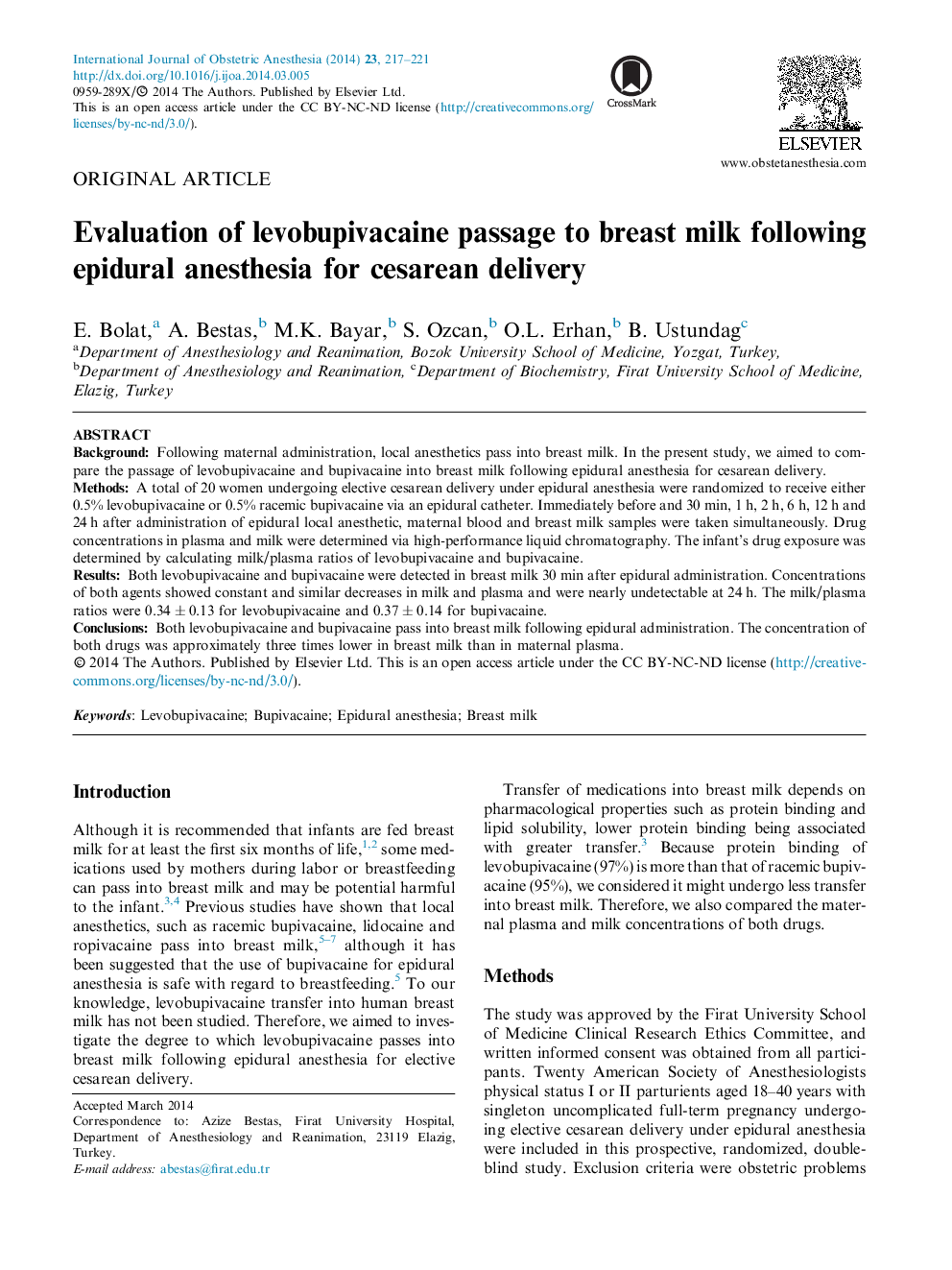| Article ID | Journal | Published Year | Pages | File Type |
|---|---|---|---|---|
| 5883282 | International Journal of Obstetric Anesthesia | 2014 | 5 Pages |
â¢Levobupivacaine is the pure S(â)-enantiomer of racemic bupivacaine.â¢We investigated whether levobupivacaine passes into breast milk.â¢Levobupivacaine was detected in breast milk after 30 min of epidural administration.â¢Milk/plasma ratio of levobupivacaine based on AUC0-24 values was 0.34 ± 0.13.â¢The course of plasma and milk levels of levobupivacaine and bupivacaine were similar.
BackgroundFollowing maternal administration, local anesthetics pass into breast milk. In the present study, we aimed to compare the passage of levobupivacaine and bupivacaine into breast milk following epidural anesthesia for cesarean delivery.MethodsA total of 20 women undergoing elective cesarean delivery under epidural anesthesia were randomized to receive either 0.5% levobupivacaine or 0.5% racemic bupivacaine via an epidural catheter. Immediately before and 30 min, 1 h, 2 h, 6 h, 12 h and 24 h after administration of epidural local anesthetic, maternal blood and breast milk samples were taken simultaneously. Drug concentrations in plasma and milk were determined via high-performance liquid chromatography. The infant's drug exposure was determined by calculating milk/plasma ratios of levobupivacaine and bupivacaine.ResultsBoth levobupivacaine and bupivacaine were detected in breast milk 30 min after epidural administration. Concentrations of both agents showed constant and similar decreases in milk and plasma and were nearly undetectable at 24 h. The milk/plasma ratios were 0.34 ± 0.13 for levobupivacaine and 0.37 ± 0.14 for bupivacaine.ConclusionsBoth levobupivacaine and bupivacaine pass into breast milk following epidural administration. The concentration of both drugs was approximately three times lower in breast milk than in maternal plasma.
